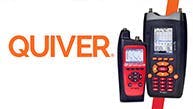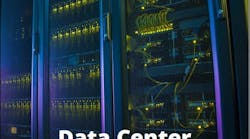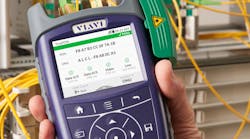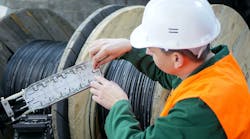There is new technology in the form of range to fault test equipment which allows the technician to perform this return path impairment troubleshooting and not affect live traffic on the network.
The industry has historically struggled with the balance and tradeoff of developing a process of how to most efficiently and effectively troubleshoot the return path network to track impairments – while minimizing the disruption and service interruption caused by the troubleshooting process. It has never been an easy subject with mixed messages being sent – technicians are always encouraged by management to troubleshoot in the least disruptive manner possible and not affect customers using the network, yet on the other hand the capabilities of the tools they are provided necessitates that troubleshooting is performed in a disruptive manner. For years the tools provided to the industry have not supported the goal of helping you to maintain the best network performance and reliability. Tools that require the network to be shut down and disrupted in order to troubleshoot are simply not good enough. Tools that force service downtime - that force loss of video, loss of data, loss of voice, and loss of lifeline service are incongruent with the reliability, robustness, and quality of the modern HFC network. How reliable is your network if the tool used to troubleshoot requires you to interrupt service?
Since the status quo technology offered no real alternative or solution, the industry previously had no choice other than to accept the reality that troubleshooting is disruptive and causes outages. Certainly PNM efforts have incrementally changed the process and has helped minimize some disruption in troubleshooting – but existing PNM tools only provide visibility to a limited set of impairments – and once an impairment zone is identified, field troubleshooting that is likely disruptive to traffic is still necessary.
Fortunately, there is new technology in the form of range to fault test equipment which allows the technician to perform this return path impairment troubleshooting and not affect live traffic on the network. Management no longer has to accept disruptive troubleshooting practices as there is now an alternative. With this technology it is now possible to establish better and more firm troubleshooting processes and practices that ensure maximum network uptime, consistent with the experience demanded of both business and consumer customers in our competitive environment. Impairing the network while troubleshooting moves from being a necessity to a choice.
Broadly, there are two categories of return path distortions that previously required network disruption in order to troubleshoot. Non-linear distortions such as CPD, and Linear distortions - micro-reflections, and impedance mismatches. CPD typically manifests as returns having elevated noise floors and is frequently misdiagnosed as ingress. The impedance mismatches are typically identified as occurring in a broad zone by some PNM or CMTS monitoring tool. Quiver is an advanced piece of handheld test equipment from Arcom Digital that uses range to fault technology to identify the exact distance to both non-linear and linear distortions.
Traditional techniques to identify CPD and non-linear distortions would be for the technician to use a spectrum analyzer, with the same or a different technician looking at a screen to see if something changes as various device outputs are disconnected. If something changed the user knows to continue to troubleshoot downstream on that leg. Despite the obvious problematic and customer dissatisfying behavior of disconnecting a return, there are additional challenges presented in troubleshooting CPD using yesterday’s status quo tools. CPD often appears very intermittent and may not be active simultaneous to the measurement time. Only very high level CPD can be identified on a spectrum analyzer, and additionally CPD in the modern digital network appears not as traditional recurring 6MHz spikes in the return path – but alternatively as broadband noise. Noise is generally accepted as being generated from the home, and return path CPD is primarily a hardline phenomenon. The troubleshooting process for each of these very different condition is substantially different. The fact that the technician can’t even identify what the impairment is with status quo tools – is a significant handicap to fixing a problem. This is a major reason why CPD is difficult to troubleshoot, and why intermittent problems can continuously remain for months at a time, with many truck-rolls wasted in failed attempts of trying to resolve. Quiver solves these problems by using radar technology employing correlation processing. Quiver noise floor is significantly below the return path noise floor, therefore rendering those previously intermittent problems very stable and easy to find. Additionally, with Quiver there is complete certainty that if a problem is identified as CPD, it actually is CPD or some intermodulation distortion. There can be no confusion or mix-up with noise or ingress. If there is CPD, the instrument indicates CPD – and the range to fault capability tells the user exactly how far away the impairment is located. Lastly, the connection to the plant is made using existing amplifier or headend test points, or by using passive probes that unobtrusively connect to line passives. The network is never taken down nor impacted in the troubleshooting process.
A similar technique is utilized when troubleshooting micro-reflections and linear distortions. The technician goes to the general area where there is a known problem, and instead of connecting a traditional TDR that only works accurately on non-powered plant and therefore requires network disruption, the technician connects with Quiver in TDR mode. Quiver contains a unique Network Traffic Compatible (NTC) TDR that operates by transmitting extremely low level spread spectrum pulses that are transparent and well below the cable system noise floor. An advanced autocorrelation process is employed which captures all reflected signals. The TDR screen is presented as showing the return loss across the entire cable span, with distances to deficient locations readily observable to the technician. So rather than guessing and fixing network components on a trial and error basis – the technician is led exactly to the problem, with certainty and confidence that the fix will actually alleviate the issue.
This new technology now enables technicians to be more effective and productive in the troubleshooting of return path impairments – and importantly enables a significant shift in the generally accepted process such that troubleshooting can now be a passive activity – that is non-disruptive to the customer experience. System uptime and customer satisfaction is maximized.




